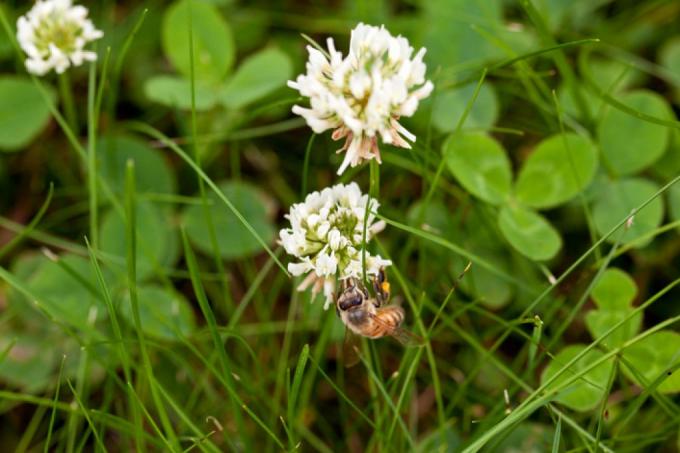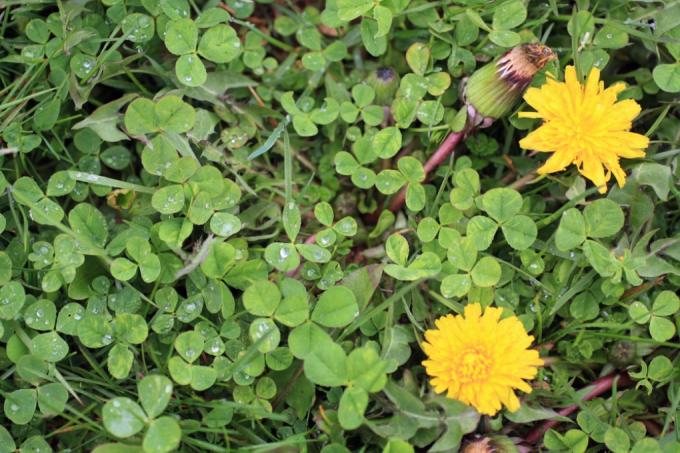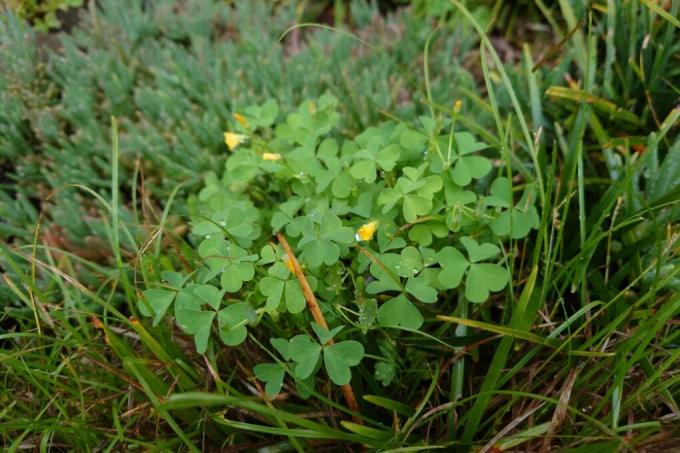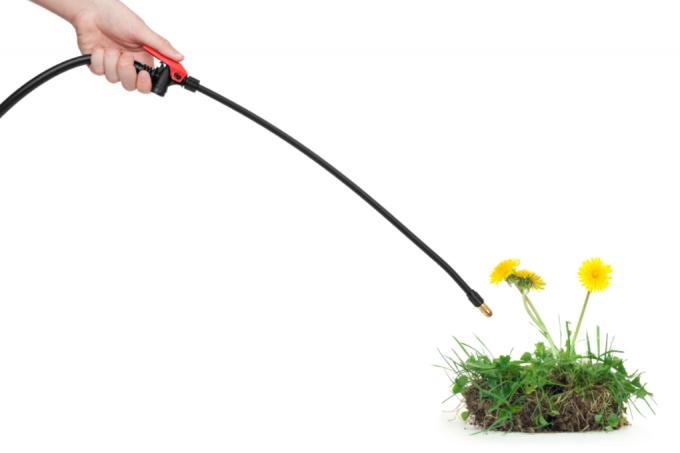AT A GLANCE
How do I remove clover from the lawn and why is it actually useful?
There are four environmentally friendly approaches to regulating clover: 1. Manual removal with weed cutter or spade, 2. Light shielding by covering with foil, 3. Mechanical regulation by scarifying, 4. Strengthening lawn growth and soil testing for prevention. Keep in mind that removing clover can impact your garden ecosystem. Clover is an essential food source for bees and other insects.
Tip 1: Remove manually with persistence
A natural and insect-friendly garden thrives on its diversity. The White clover plays an important role in this. While for many it is a sign of healthy soil, it can sometimes become overwhelming in the lawn. Hobby gardeners can choose manual removal, although persistence is crucial here. Because white clover tends to be less dominant than some of its relatives, there is a good chance of success. When young sour or Horn trefoil The following methods can also be used to reliably remove unwanted plants:
- Use the weed cutter to grab the clover including the taproot, shake it slightly and remove it from the lawn
- Use a spade to dig larger areas deep out of the earth
- The resulting gaps can be re-seeded or pieces of turf repair
also read
Plucking the clover out of the lawn by hand only works sporadically. All Types of clover have a deep taproot that helps them anchor themselves in the ground. As long as only a tiny remnant of this root remains in the soil, clover will continue to sprout.
How to correctly identify clover in the lawn
The different types of clover that can appear in your lawn sometimes show clear differences in their appearance and their ecological role. Knowledge about the respective type of clover is crucial in order to choose the most appropriate care measure. The table below lists the special characteristics of each type of clover for reliable identification:
| Recognize the 3 most important types of clover | White clover | wood sorrel | Horn trefoil |
|---|---|---|---|
| Growth height | 5-20cm | 5-15cm | 10-30cm |
| flowering time | May until October | April to June | June to August |
| Flower color | white | white with purple veins | yellow |
| flower shape | spherical | Chalice shape | doldig |
| Indicator plant for soil quality | nutrient-poor, calcareous | low in lime, acidic | low in nitrogen |
Tip 2: Use foil to block the light from the clover
Since plants need light to grow, this natural property can be used to curb the growth of clover in the lawn. With a dark film you can effectively prevent the clover's photosynthesis. Here are the steps you should consider:
- Cover the lawn area covered with clover with a dark film cover
- Weigh down the edges of the film with sand and stones or fix them in the ground using plastic anchors
- Leave the opaque film in place for 4 to 6 weeks
When you remove the film, both the clover and the turf have retreated. Unlike clover, the grass will thrive with a little care and attention fertilizer recover again. Please note that this method is particularly suitable for smaller pieces of lawn.
Tip 3: Regulate clover mechanically
When clover spreads across the entire lawn, manual approaches can often reach their limits. This is where the scarifier comes into play, a useful device that will help you regulate the clover effectively. The best way to do this is in... April and September through. How to do it right:
- Keep the lawn as short as possible on a dry, overcast day mowing
- Use the scarifier to work the grass area in a checkerboard pattern
- The green within the following 7-14 days fertilize and water repeatedly
Scarifiers are special devices that scrape the soil to a depth of 3-5 millimeters and comb out the clover and moss. What remains are the blades of the lawn, which quickly close the resulting gaps with subsequent care. If you have removed a large amount of clover, you can remove bare spots with one Reseeding support.
Tip
Before making any decisions about your lawn, always weigh environmental benefits versus aesthetic preferences. Your garden can be a home to many beneficial creatures, and a little clover can make a big difference!
Tip 4: Preventive measures to strengthen the lawn
A dense and strong lawn makes it difficult for clover and other plants to invade. Although clover can be a sign of healthy soil, good Lawn care strengthen the lawn so that it plays the main role in the garden. The following steps can help you:
- A pH test or one Soil analysis create at intervals of 2-3 years
- Depending on the result, cut the lawn in the spring lime and fertilize with horn meal
- Strengthen the lawn in autumn with fertilizer containing potassium
- Do not mow deeper than 4-5 centimeters so that no sunlight reaches the unwanted plant seeds and they germinate
- Water the grass area regularly when it is dry
- Avoid flowering clover to prevent seed spread
- Use nettle manure and horn shavings, both of which stimulate lawn growth with their high nitrogen content.
Lime with caution, as limescale in the case of white and wood sorrel Although helpful, it can promote growth in lime-loving horn trefoil.
Tips & Tricks
Don't feel like mowing the lawn every week in the summer? Then create a flower lawn as the happy medium between a uniform decorative lawn and a knee-high lawn Wildflower meadow. This stroke of genius succeeds thanks to a combination of slow-growing Lawn varieties and small, hardy flower species. Mowing is only done 2 to 3 times per season.










